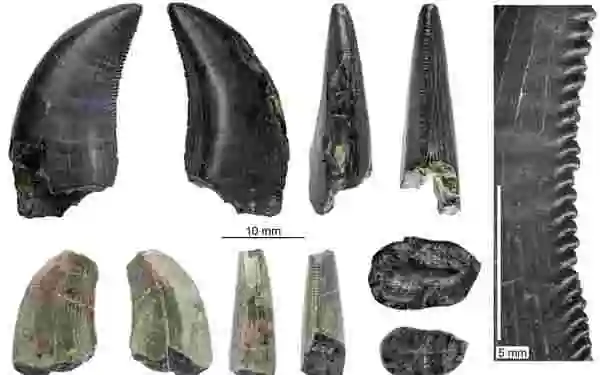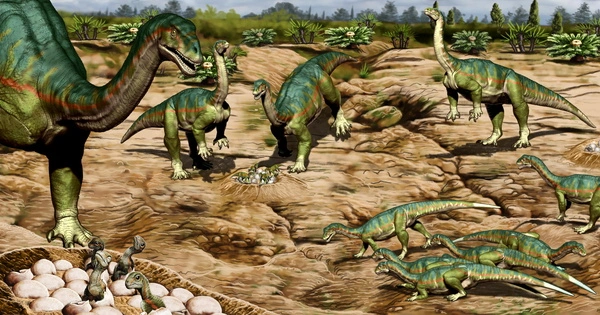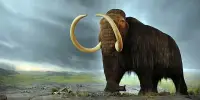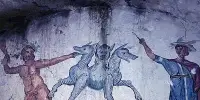Patagonia, a region located in southern Argentina and Chile, has yielded a diverse array of dinosaur fossils from the Late Cretaceous period, including species such as Argentinosaurus and Mapusaurus. These finds have provided valuable insights into the evolution and diversity of dinosaurs in the southern hemisphere.
A study led by The University of Texas at Austin is providing a glimpse into dinosaur and bird diversity in Patagonia during the Late Cretaceous, just before the non-avian dinosaurs went extinct. Some of the most notable dinosaurs found in Patagonia include the giant sauropod Argentinosaurus, the meat-eating theropod Giganotosaurus, and the ornithopod Dinodontosaurus. These fossils have provided valuable insights into the diversity and evolution of dinosaurs in the southern hemisphere.
The fossils are the first record of theropods – a dinosaur group that includes both modern birds and their closest non-avian dinosaur relatives – from Chilean Patagonia. The researchers discovered giant megaraptors with large sickle-like claws as well as birds from the group that includes today’s modern species.
“The fauna of Patagonia prior to the mass extinction was really diverse,” said lead author Sarah Davis, who completed this work as part of her doctoral studies with Professor Julia Clarke at the UT Jackson School of Geosciences Department of Geological Sciences. “You have your large theropod carnivores and smaller carnivores, as well as these bird groups coexisting with other reptiles and small mammals.”
The study was published in the Journal of South American Earth Sciences.
The fauna of Patagonia prior to the mass extinction was really diverse. You have your large theropod carnivores and smaller carnivores, as well as these bird groups coexisting with other reptiles and small mammals.
Julia Clarke
Members of the Clarke lab, including graduate and undergraduate students, have been working in Patagonia with Chilean scientists to collect fossils and build a record of ancient life in the region since 2017. Researchers have discovered numerous plant and animal fossils from before the asteroid strike that wiped out the dinosaurs.
Theropods are the focus of the study, with fossils dating from 66 to 75 million years ago. Non-avian theropod dinosaurs were mostly carnivorous, and they dominated the food chain. According to this study, these predators in prehistoric Patagonia included dinosaurs from two groups: megaraptors and unenlagiines.
Reaching over 25 feet long, megaraptors were among the larger theropod dinosaurs in South America during the Late Cretaceous. The unenlagiines – a group with members that ranged from chicken-sized to over 10 feet tall — were probably covered with feathers, just like their close relative the velociraptor. The unenlagiinae fossils described in the study are the southernmost known instance of this dinosaur group.

The bird fossils were also divided into two categories: enantiornithines and ornithurines. Enantiornithines, which are now extinct, were the most diverse and abundant birds millions of years ago. These looked like sparrows, but with teeth in their beaks. All modern birds are included in the group ornithurae. The ones that lived in ancient Patagonia may have looked like a goose or duck, though the fossils are too fragmentary to tell.
Theropods were identified using small fossil fragments, dinosaurs using teeth and toes, and birds using small bone fragments. Davis stated that the gleaming enamel on the dinosaur teeth aided in locating them among the rocky terrain.
Some researchers believe that the Southern Hemisphere experienced less extreme or more gradual climatic changes as a result of the asteroid strike than the Northern Hemisphere. This may have made Patagonia and other places in the Southern Hemisphere a haven for surviving birds, mammals, and other life. Davis believes that this study will help researchers investigate this theory by creating a record of ancient life before and after the extinction event.
According to study co-author and Antarctic Institute of Chile director Marcelo Leppe, these past records are critical to understanding life as it exists today. “We still don’t know how life survived in that apocalyptic scenario and gave rise to our southern environments in South America, New Zealand, and Australia,” he says. “Here theropods are still present, but not as imposing dinosaurs like megaraptorids, but as the diverse array of birds found in Patagonia’s forests, swamps, and marshes, as well as in Antarctica and Australia.”















